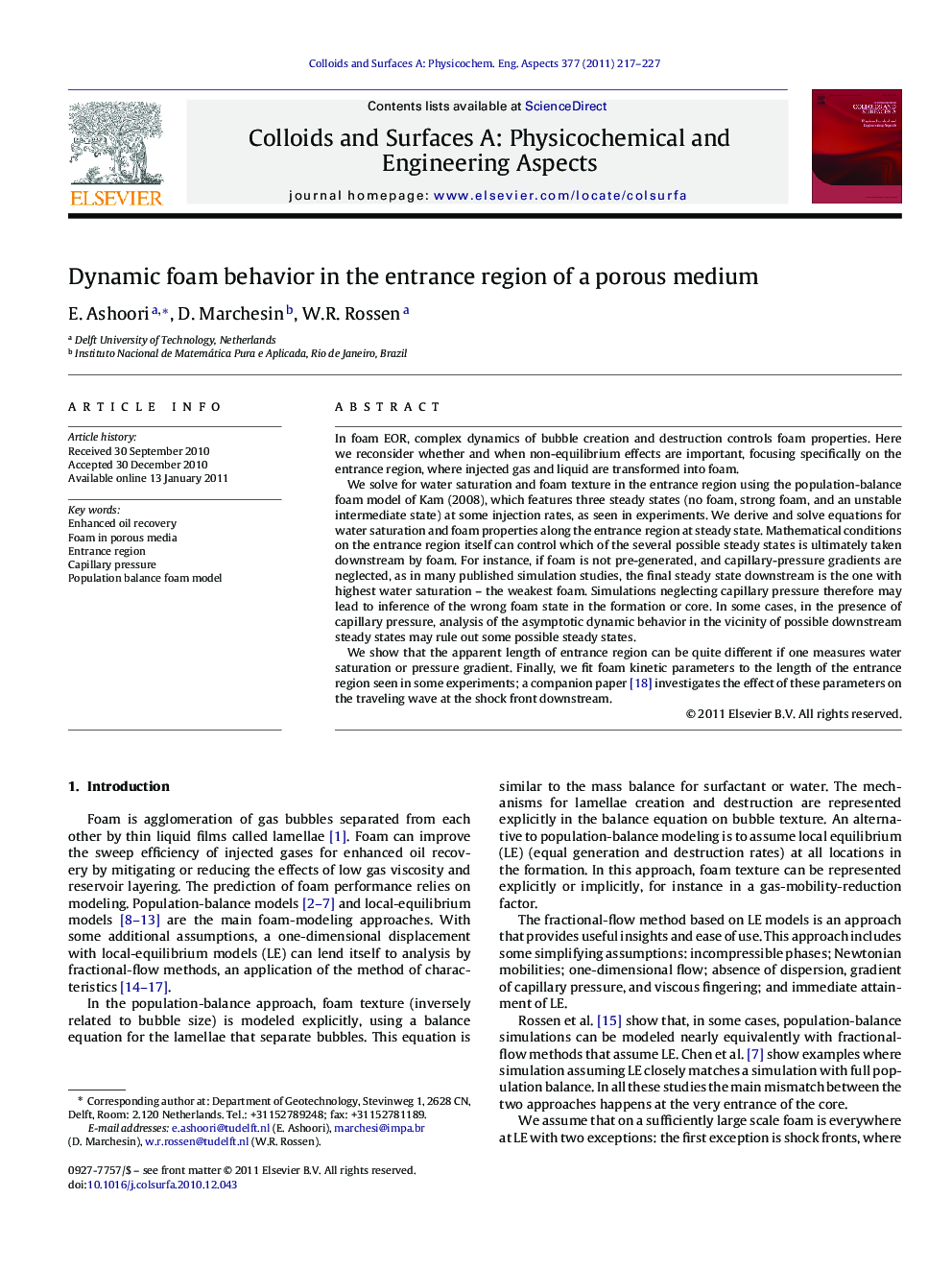| Article ID | Journal | Published Year | Pages | File Type |
|---|---|---|---|---|
| 594962 | Colloids and Surfaces A: Physicochemical and Engineering Aspects | 2011 | 11 Pages |
In foam EOR, complex dynamics of bubble creation and destruction controls foam properties. Here we reconsider whether and when non-equilibrium effects are important, focusing specifically on the entrance region, where injected gas and liquid are transformed into foam.We solve for water saturation and foam texture in the entrance region using the population-balance foam model of Kam (2008), which features three steady states (no foam, strong foam, and an unstable intermediate state) at some injection rates, as seen in experiments. We derive and solve equations for water saturation and foam properties along the entrance region at steady state. Mathematical conditions on the entrance region itself can control which of the several possible steady states is ultimately taken downstream by foam. For instance, if foam is not pre-generated, and capillary-pressure gradients are neglected, as in many published simulation studies, the final steady state downstream is the one with highest water saturation – the weakest foam. Simulations neglecting capillary pressure therefore may lead to inference of the wrong foam state in the formation or core. In some cases, in the presence of capillary pressure, analysis of the asymptotic dynamic behavior in the vicinity of possible downstream steady states may rule out some possible steady states.We show that the apparent length of entrance region can be quite different if one measures water saturation or pressure gradient. Finally, we fit foam kinetic parameters to the length of the entrance region seen in some experiments; a companion paper [18] investigates the effect of these parameters on the traveling wave at the shock front downstream.
Research highlights▶ In foam EOR, complex dynamics of bubble creation and destruction controls foam properties. Here we focus specifically on the entrance region, where injected gas and liquid are transformed into foam. We solve for water saturation and foam texture in the entrance region using the population-balance foam model of Kam (2008), which features three steady states (no foam, strong foam, and an unstable intermediate state) at some injection rates, as seen in experiments. We derive and solve equations for water saturation and foam properties along the entrance region at steady state. ▶ Foam is known to exist in multiple steady states (most often, strong foam and weak-foam or no-foam). Which type of foam forms is crucially important, and this is determined by processes in the entrance region. For instance, if foam is not pre-generated, and capillary-pressure gradients are neglected, as in many published simulation studies, the final steady state downstream is the one with highest water saturation – the weakest foam. Simulations neglecting capillary pressure therefore may lead to inference of the wrong foam state in the formation or core. In some cases, in the presence of capillary pressure, analysis of the asymptotic dynamic behavior in the vicinity of possible downstream steady states may rule out some steady states. ▶ The length of the entrance region is also important for deriving kinetic parameters for foam generation and destruction. We show that the apparent length of entrance region can be quite different if one measures water saturation or pressure gradient. Finally, we fit foam kinetic parameters to the length of the entrance region seen in some experiments; a companion paper1 investigates the effect of these parameters on the traveling wave at the shock front downstream.
